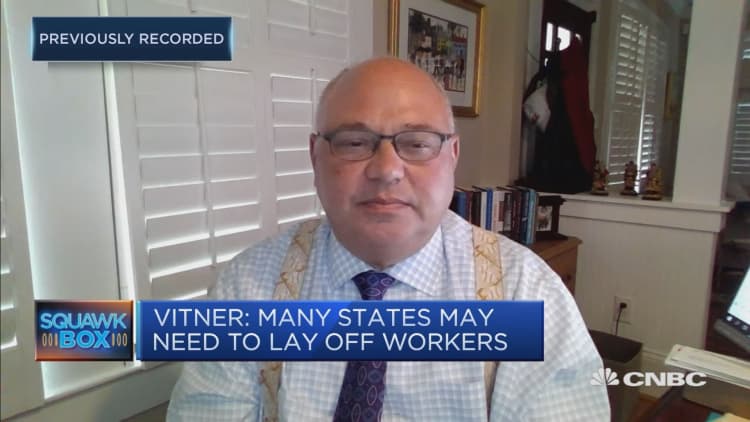
The unemployment system is fraying.
Unemployment benefits are less generous than in decades past, in key metrics like duration, amount paid and the share of unemployed who receive aid.
The aggregate result is less money going to fewer people for a shorter amount of time.
This dynamic is playing out during an unemployment crisis fueled by the coronavirus pandemic, when nearly 32 million people are collecting jobless benefits.
More from Personal Finance:
GOP propose second round of $1,200 stimulus checks
GOP plan slashes unemployment by 43% for average worker
How the eviction crisis across the U.S. will look
Federal aid, namely an extra $600 a week, has provided a temporary stopgap since late March. But expiring relief now puts the generosity of the system front and center.
"The [unemployment insurance] program is a broken system and should be rethought," Stephen Wandner, a senior fellow at the National Academy of Social Insurance, said in a recent paper.
Wage replacement
Unemployment benefits offer temporary income replacement for workers who lose their jobs through no fault of their own.
The system generally offers less than a worker's prior paycheck, meant as an incentive to find another job.
Yet the average share of lost wages replaced by the unemployment system has been trending downward.

In the early 1980s, unemployment benefits replaced about 37% of prior pay.
That "wage replacement rate" fell to less than a third in 2018, according to research published this year by Wandner and Christopher O'Leary, senior economist at the W.E. Upjohn Institute for Employment Research.
Who gets paid
At the same time, fewer people have been able to access aid.
The share of unemployed workers who collect jobless benefits has also fallen, to about 28% today from 44% in 1980, according to Wandner and O'Leary.
That means just 1 in 4 unemployed workers nationwide are getting money.
Fragmented system
National averages in wage replacement and "recipiency" mask wide variation among states.
Unemployment insurance was created by the Social Security Act in 1935 as a response to the Great Depression.
The administration of President Franklin D. Roosevelt built it as a joint federal-state program so states could "experiment" in developing their own systems, Wandner said.
It's still an experiment, and it's going in 53 different directions.Stephen Wandnersenior fellow at the National Academy of Social Insurance
That gives state legislatures (as well as Washington, D.C., Puerto Rico and the Virgin Islands) wide latitude to set rules within a broad federal framework. Some are generous, others much less so.
"It's still an experiment, and it's going in 53 different directions," Wandner said. "It really is an experiment out of control."
For example, states set caps on the amount of money a worker can get per week. Some states set high thresholds and others low.
Mississippi, for example, lets workers collect up to $235 a week, the lowest of any state. Massachusetts pays more than $1,200, the largest potential sum.
Some states — typically southern states — make it harder for the unemployed to qualify, apply for and receive benefits, Wandner said.
In North Carolina and Florida, less than 11% of unemployed workers collect jobless benefits, respectively, according to Wandner and O'Leary.
By comparison, nearly five times as many unemployed workers are paid in Massachusetts and New Jersey. They have respective recipiency rates of 49.3% and 51.7%.
Duration
This state variability is also apparent in the length of time during which unemployed workers can receive benefits.
Most states pay aid for up to 26 weeks (around six months).
But nine pay less, according to the Center on Budget and Policy Priorities.
North Carolina and Florida pay the least — up to 12 weeks of benefits, or less than half the other states. (Others have raised their typical duration in response to the current recession.)
"States with low recipiency have low maximum benefit levels and some have low duration," Wandner said. "It's all related."
After the Great Recession, when states depleted their unemployment insurance trust funds to pay benefits, some states decided to cut back on jobless aid instead of raising taxes to refill their coffers, Wandner said.
Of course, as is the case now, the federal government can offer more relief during recessions. Lawmakers boosted aid by $600 a week, expanded the pool of workers eligible for benefits and extended pay by 13 weeks.
But these are just temporary stopgaps. The $600 payments ended over the weekend. Lawmakers are struggling to figure out whether to extend or replace them. Eligibility and duration expansions will be cut off at the end of the year.
Taken together, the unemployment system isn't equipped to handle a recession of this severity, Wandner said.


